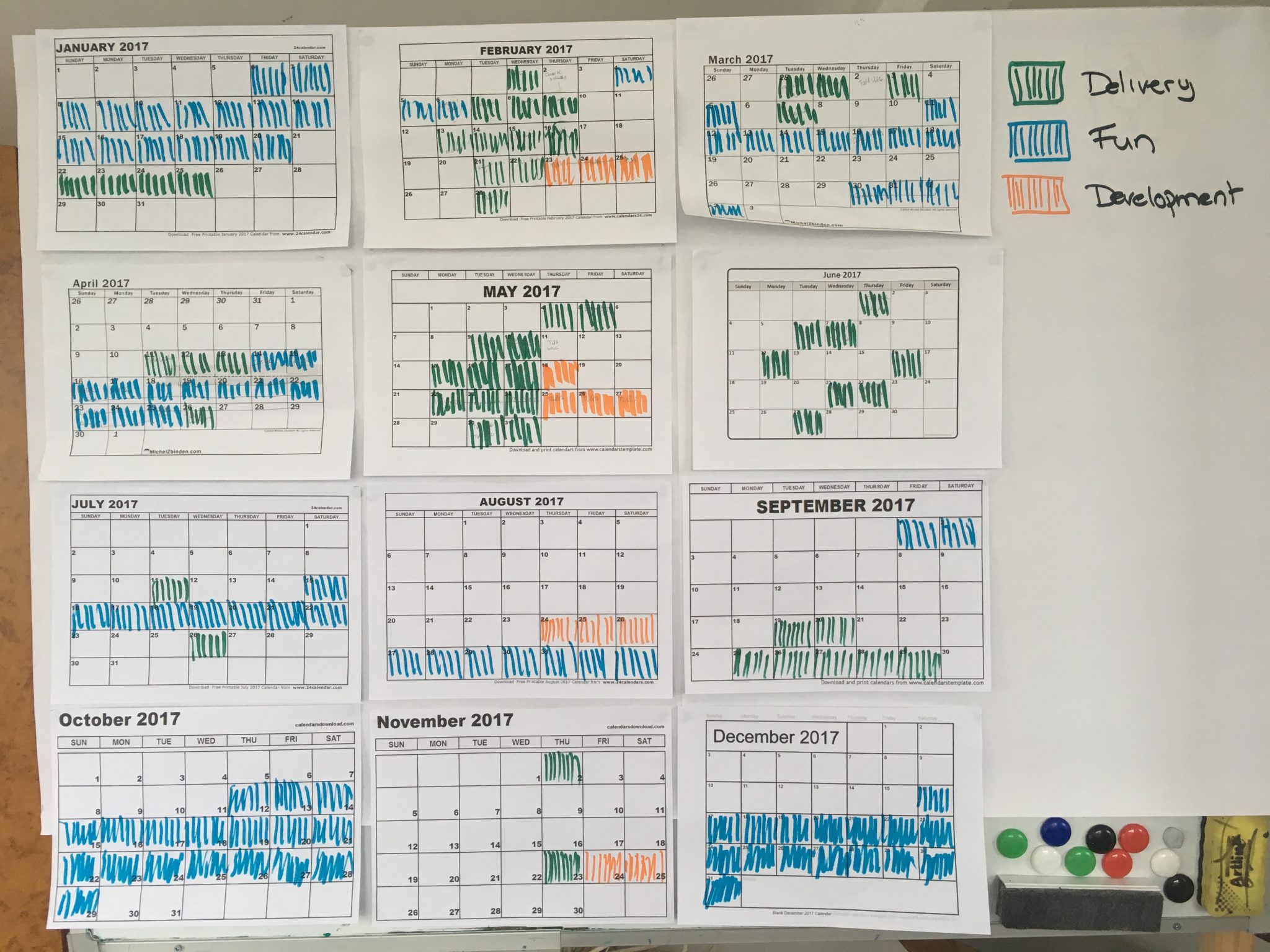
Your Year By Design
5th Jan 2017People often say to me “you’re so lucky, you’re always on holidays!” Well, it’s probably true that I do take more time out than most people. But it has nothing to do with luck. It’s by design.
If you’re like a lot of people, you can get to the end of the year and wonder, “where did the time go?” Perhaps with some regret for the things you’d intended to do but didn’t quite get around to. Perhaps you suffer from ‘one-day’ syndrome. You know: “one day, I’ll [fill in the blank]. Robert Fritz, in his book The Path of Least Resistance, says that the hardest thing in the world for many people is to honestly answer “what do I really want?” and then stay true to that.
The way I see it, it’s smart to take charge and design your life in a way that works for you. Otherwise, everything can be just a jumble of things that happen to you in between being born and dying.
Here’s how I design my year so I can have the greatest chance of making sure I am living ‘on purpose’. Every January, I sit down and do the following:
First, I do a ‘year in review’. I go through the things I did from the previous year, reviewing my calendar, journals and also my Facebook page. Any place where I’ve recorded my events and activities. I’m looking for two things:
- The most positive experiences I’ve had during the year
- The most negative experiences I’ve had during the year
These might be things I’ve done, places I’ve been, things I’ve bought, or people I’ve spent time with.
I’ll have two columns (one for positive, one for negative), and as I review, I’ll write things down.
Next, I look for patterns. What seems to be the common theme? For example, one theme I noticed for my 2016 was that the ‘positive’ people seem to all be very generous with their time and ideas, while the people I had more ‘negative’ experiences with tended to be time-poor and/or somewhat selfish. Interesting. I find that the most positive experiences speak to and reflect my deepest values, and it’s worth you reflecting on this too. The Schwartz Values Model is a useful tool here.
Then I ask myself: “What do I want to have happen this year?” I’ll take the themes and values, and build from them. Useful sub-questions for me include “who do I want to hang out with?” “What work will be really interesting and engaging for me?” “What adventures do I want to have?” “What do I want to achieve?” “What could I do that would cause me to grow?” and, crucially, “what do I want to drop, or dial down?” Ya gotta make room for the good stuff. Tim Ferris also suggests asking people close to you “what should I do more of this year?” and “what should I do less of?”
Next, I schedule the good stuff. Steven Covey calls this putting the ‘big rocks in the jar first’. I’m a big picture kind of guy, so I’ll make a big calendar and put it up on my whiteboard in my office. Here’s what that looks like:

It’s colour-coded as follows:
Blue = creative pursuits, adventures and time out. These are based on my values of adventure, learning and creativity. These are all really important to me, so they go in first. The ‘blue time’ includes adventures like my annual surfing and windsurfing trip, family snowboarding trips etc. as well as less intense activities where I’ll take some time out to read, write and think.
Green = ‘delivery’ work. This is the time where I’m earning money, but more importantly, it’s also time spent where I have a chance to make a difference using my talents. Scheduling the green time serves two purposes: it shows me my cash flow (am I earning enough?) and it also gives me a sense that I’m spending enough of my time doing worthwhile work.
Orange = professional development. This is structured time for me to reflect on my work and practice, and plan ahead. I happen to be doing a programme that forces me to build in these days, which really helps.
The three categories reflect the types of activities that are both a) important to me and b) able to be scheduled in advance.
When I step back, I can see that I’ve got ‘enough’ happening in the blue space, I’ll need some more green going on in the latter half of the year, and there’s lots of ‘white space’ that I can use how I want (which might include spending time with good people, booking in quality work, or finishing my book!)
I’ll book all of these activities into my Google Calendar, which my Business Manager and family can see, and I can access easily from anywhere.
Finally, I’ll make a list of the people I enjoyed hanging out with last year, as well as new people I would love to connect with. I’ll make the list visible. It’s currently posted up on my wall next to my computer. Every week or so, I’ll have a look at it and make contact with someone on it. That ensures I’m getting the people connection that is important to me.
A few important things to note about this process:
- My year by design is just that: mine. It’s based on what’s important to me. You don’t need to replicate the colour-coded categories that I have. Go do your own 🙂
- This process applies to anyone, not just those who are self-employed like me. The fundamental idea is about deciding on, and committing to, the stuff that you want to have happen.
- When you book in the ‘good stuff’ first, you make less room for the crappy stuff. If your time is spent doing good stuff with good people, it’s hard for the other stuff to find a way in.
- 90% of the value of scheduling something in is in the anticipation of it happening.
That’s it. As you can see, it’s not really about luck. There’s quite a bit of work in it. Although I wouldn’t call it ‘work’ – it’s a fun, energising process that helps to ensure I am making the most of my time on the planet. Go do it.
(Here’s my-year-by-design-template for you to use).
Photo: Pixabay
Like this post? You’re only getting half the story. Sign up to my ‘Fresh Thinking’ newsletter, delivered monthly to your inbox.
Are you a Change Maker? Learn more about my Change Makers programme, including next intake dates.


4 thoughts on “Your Year By Design”
Comments are closed.